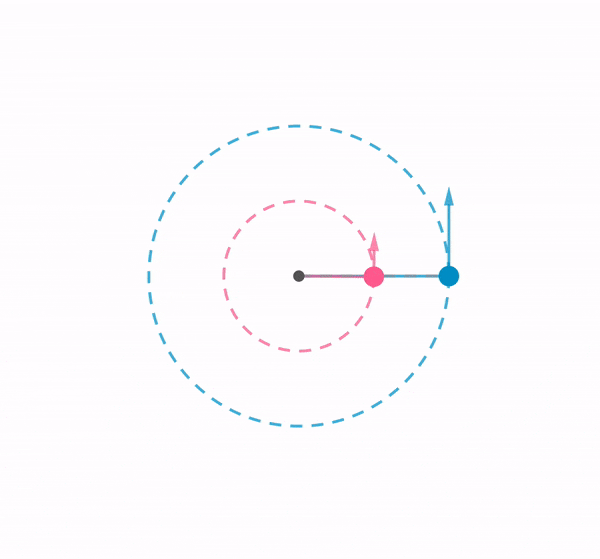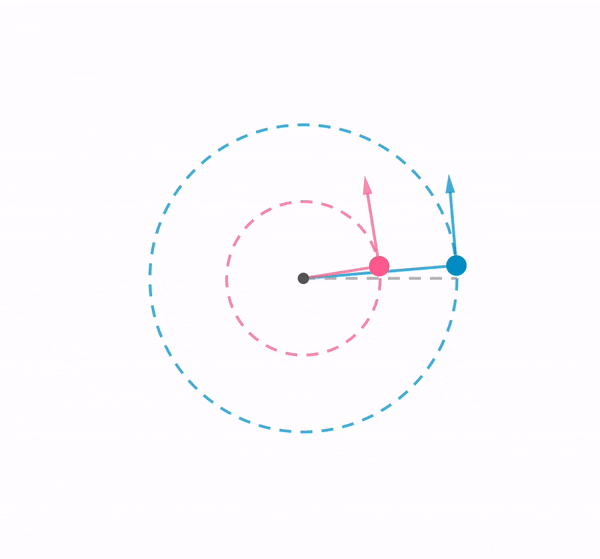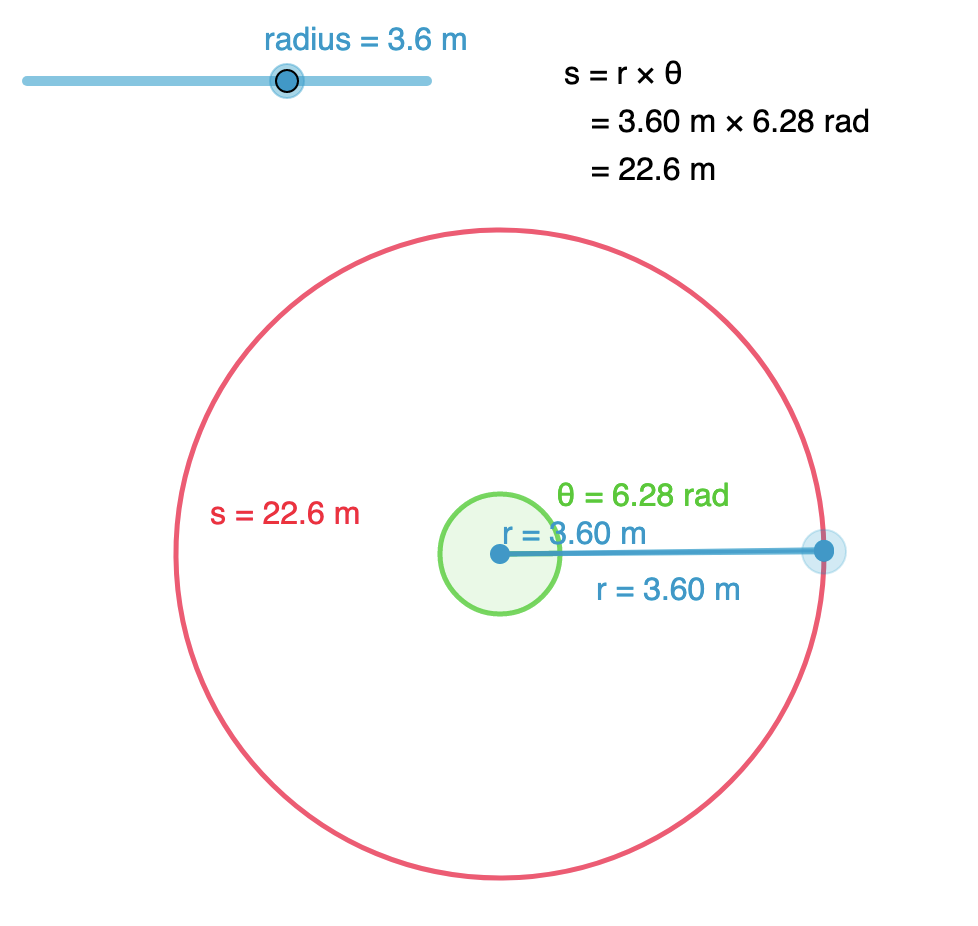This GeoGebra app shows how angular velocity ω is the rate of change of angular displacement (i.e. $\omega=\dfrac{\theta}{t}$) and is dependent on the speed and radius of the object in circular motion (i.e. $v=r\omega$).
Students can explore the relationships by doing the following:
Keeping r constant and varying ω.

Keeping ω constant and varying r.

Keeping v constant by varying r and ω.

